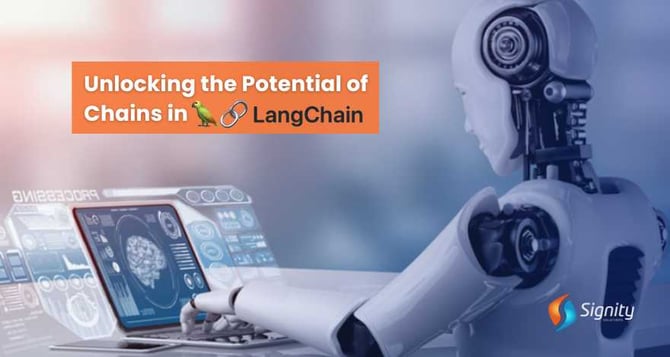Unlocking the Potential of Chains in Langchain
Discover how Langchain's chains streamline application development, from preprocessing to post-processing. Learn key concepts, best practices, and technical implementation with a focus on scalability and modularity.

Introduction
Langchain, a powerful framework for leveraging Large Language Models (LLMs), offers developers a plethora of tools and techniques for building robust and versatile applications. Among its many features, chains stand out as a fundamental concept that enables seamless integration and orchestration of various tasks within the framework. In this guide, we'll dive deep into the world of chains in Langchain, exploring their significance, usage, and best practices for maximizing their potential in application development.
Understanding Chains in Langchain
In Langchain, chains represent a sequence of interconnected tasks or operations, each contributing to an application's overall processing pipeline. These tasks can range from data preprocessing and model inference to post-processing and result visualization. By organizing tasks into chains, developers can modularize their code, promote code reusability, and facilitate the maintainability and scalability of their applications.
Tap into Langchain's Potential: 75% Faster Deployment
Don't let slow deployment hinder your progress. With our Langchain solutions, you experience a 75% faster deployment rate and stay ahead of the competition. Partner with us for rapid results.
Key Concepts and Components
-
Task: A task represents a single unit of operation within a chain. It encapsulates logic for performing a specific task, such as data preprocessing, model inference, or result visualization.
-
Chain: A chain is a collection of interconnected tasks arranged in a sequential order. It defines an application's overall processing flow and orchestrates the execution of individual tasks.
-
Input and Output: Each task within a chain takes input data, processes it according to its logic, and produces output data. Input and output data can take various forms, including raw text, structured data, or model predictions.
-
Dependency Management: Chains can specify dependencies between tasks, ensuring that tasks are executed in the correct order and that output data from one task can serve as input data for subsequent tasks.
Also Read: LangChain vs. Transformers Agent: A Comparative Analysis
Usage and Best Practices
-
Modularization: Break down complex workflows into smaller, manageable tasks and organize them into chains based on logical relationships and dependencies. This promotes code modularity and reusability.
-
Task Abstraction: Abstract common operations and functionalities into reusable tasks that can be shared across multiple chains or applications. This simplifies development and maintenance efforts.
-
Error Handling: Implement robust error-handling mechanisms within tasks to handle exceptions and failures gracefully. Ensure that error messages are informative and actionable for troubleshooting.
-
Logging and Monitoring: Incorporate logging and monitoring mechanisms to track the execution of tasks within chains, capture important metrics, and diagnose performance issues or bottlenecks.
-
Testing and Validation: Develop comprehensive testing suites to validate the functionality and correctness of chains and tasks. Include unit tests, integration tests, and end-to-end tests to ensure robustness and reliability.
Also Read: Principles of Langchain in LLM-Based Application Development
Technical Implementation
Let's illustrate the usage of chains in Langchain through a simple example of building a text summarization application:
|
|
How Our Company Enhances Langchain Services
As a generative AI Development Company specializing in cutting-edge solutions like Langchain, we bring unparalleled expertise and support to maximize Langchain's potential in your projects. Our ChatGPT Developers are proficient in leveraging Langchain's capabilities to deliver customized solutions tailored to your specific needs.
Whether optimizing chains for performance, integrating advanced features, or providing comprehensive training and support, Signity Solutions is your trusted partner in mastering the art of chains and unlocking Langchain's full potential for transformative applications.
Elevate your Applications with our Expertise and Support
Join the satisfied developers who have seen a 90% improvement in their Langchain projects with our solutions.
Conclusion
Chains are a fundamental building block in Langchain, enabling developers to create modular, scalable, and maintainable applications with ease. By understanding the concepts and best practices of chains, developers can leverage Langchain's full potential and unlock new possibilities in LLM-based application development.
Whether building chatbots, content summarization tools, or language translation services, mastering the art of chains empowers developers to create transformative applications that drive innovation and enhance user experiences.


%201-1.webp)


.png?width=344&height=101&name=Mask%20group%20(5).png)
















